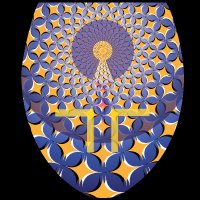Intellectual Karma Diagnostic Matrix
This version of the matrix emphasizes behavioral dynamics rather than archetypes, organizing patterns across a spectrum from implicit immaturity to explicit manipulation. Use this to identify whether an individual's behavior arises from underdeveloped cognition or intentional deception.
🔢 Scoring System:
- 0: Not present
- 1: Occasionally present
- 2: Frequently present
- 3: Dominant trait
🧠 Behavioral Criteria
| Behavior | Description | Score |
|---|---|---|
| Obfuscation | Use of confusing or needlessly complex language that obscures rather than clarifies. | |
| Citation Bombing | Overloading discourse with references to imply authority, rather than enhance understanding. | |
| Semantic Redefinition | Reframing words mid-argument to dodge accountability or shift context. | |
| Goalpost Shifting | Evasion of critique by subtly altering the claim under discussion. | |
| Performative Affectation | Intellectual cosplay: accents, academic jargon, or performative gestures to appear intelligent. | |
| Evasion of Accountability | Dodging responsibility via feigned humility, false ignorance, or rhetorical redirection. | |
| Projection / Rhetorical Immunization | Accusing others of the very tactics one is employing (e.g., calling others pseudo-intellectuals to deflect critique). | |
| Epistemic Tunneling | Applying one ideological lens to every problem without critical distance or context. | |
| Pretension Traps | Leaning on inaccessible thinkers (e.g., Deleuze, Lacan) to inflate complexity and dodge critique. | |
| Rhetorical Narcissism | Presenting a WEIRD-centric (Western, Educated, etc.) worldview as universal and normatively superior. | |
| Ideological Narrativizing | Filtering, fabricating, or distorting facts to fit an agenda. | |
| Weaponized Skepticism | Pretending not to know or constantly demanding proof to derail or exhaust inquiry. |
🎯 Diagnostic Interpretation
- 0–10: Mostly clear thinker. Likely immature or underdeveloped in intellectual habits. Trainable.
- 11–20: Pseudo-intellectual patterns present. May be unconscious or performative, but not always malicious.
- 21–30: High pseudo-intellectual density. Strong signals of narrative distortion and rhetorical manipulation.
- 31–36+: Fraudulent behavior. Likely strategic deception or ideology-peddling under the mask of reason.
🧪 Application Guide
- Observe Behavior: Across written/spoken discourse, debate, or published material.
- Assign Scores: Judge each trait based on its frequency and dominance.
- Sum Scores: Determine the individual’s position on the pseudo-intellectualism spectrum.
- Diagnose + Reflect: Use as a self-awareness or educational tool—not as a punitive label.
💡 Notes for Developers & Educators:
- This tool is meant to foster discernment and intellectual humility.
- When in doubt, contextualize! Someone may exhibit a trait without malicious intent.
- Use comedic vignettes or case studies to illustrate traits in practice (see next section).
